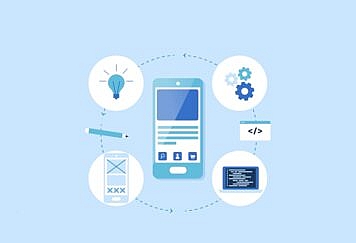Creator Guido van Rossum had one thing in mind during the ideation process for now widely used Python programming language – to remedy the shortcomings of the ABC programming language. The ideation bit started in 1989, with the creation taking about two years. Thus, in 1991, the first version, Python 0.9.0, was released into the market.
Python addressed a number of issues in which ABC was deficient. For instance, it had features such as exception handling and extensibility. Further, it was created with an Englishesque syntax that makes it easy to use and learn. It is also suitable for writing code for several applications, as we’ll detail later in this article.
Factors behind the growth of Python
Over the years, Python has grown in popularity. In fact, according to projections, Python is likely to dethrone Java as the most widely used programming language in the world. The following factors have propelled this growth:
- It is easy to use
- It makes developing software using Python a very fast undertaking
- It offers multiple libraries and frameworks
- It facilitates easy integration with other programming languages, especially in applications that require high performance (Python is relatively slow compared to other languages)
- It offers easy maintenance since the code resembles English. Hence even if another programmer developed the software, it would be easily understood by a new individual
- It is reliable and scalable (it can accommodate the growth in the number of users)
Differences between Python and other programming languages
Presently, Python is at version 3.9.1 and has distinct features that differentiate it from other programming languages. In this regard, we’ll highlight these differences.
Differences between Python and JavaScript
| Python | JavaScript | |
| Suitable for backend and server-related tasks | Suitable for front-end | |
| Runs slow | Runs faster | |
| It takes a shorter time to develop software using Python. | It takes a longer time to develop software/applications using JavaScript. | |
| It is easier to maintain | Maintenance speed lags behind Python’s |
Differences between Python and Java
| Python | Java | |
| Python code does not need compilation before running. | Java code needs compilation (change to machine language) before running. | |
| Is dynamically-typed | Is statically-typed | |
| Has a shallow learning curve | Has a steep learning curve | |
| Has a fast development speed | Software developed using Java requires a lot of time; hence, also more money. |
Differences between Python and PHP
| Python | PHP | |
| It is versatile – can be used for many purposes | Only used for web-server-related technologies | |
| It is easier to maintain | It requires more time to maintain | |
| It is more secure | It is less secure | |
| It is more organized | It is less organized |
Differences between Python and Ruby
| Python | Ruby | |
| Only focuses on simple software solutions | Has a flexible syntax that promotes creativity | |
| It has a singular approach to developing solutions | It offers multiple ways of doing the same thing |
Differences between Python and C++
| Python | C++ | |
| It is a simple programming language | It is more complex than Python | |
| Python code features shorter lines | C++ code features longer lines | |
| Compilation is not required | Compilation is required | |
| It supports several programming paradigms | It only supports two programming paradigms |
The factors mentioned above and the differences listed have increased Python’s popularity. This brings us to the next section, where we discuss the solutions Python is used to create.
Uses of Python
Python is used for the following purposes:
- Python Web scraping
- Machine learning and artificial intelligence
- Data visualization and analysis
- Web development
- Game development
- Developing desktop graphical user interface
Python is an attractive programming language when developing computer software because it supports cross-platform development. A cross-platform application is one that works on multiple operating systems. Perhaps this is also the reason why it is used for python web scraping. Nonetheless, the cross-platform support has facilitated the development of YouTube, Google, Dropbox, Netflix, Spotify, and Instagram.
Python web scraping
Python web scraping is an automated form of extracting data from the web. Scraping the web holds many benefits for businesses. This is because it facilitates:
- Price monitoring
- Job data monitoring
- Review and reputation monitoring
Price monitoring helps businesses establish their competitors’ pricing strategies, thereby enabling them to tweak their strategy to remain competitive. Job data monitoring entails extracting job search data from job boards to establish the compensations and benefits competitors offer new hires. It is a good way of identifying hiring strategies that you could use in your company. Review and reputation monitoring entail scouring the web looking for comments and feedback about your brand.
Python web scraping combines the benefits of the Python programming language and the data extraction element to help your business grow. In addition to the ease of coding using Python, there are multiple web scraping libraries whose requests you can use to create a robust and reliable web scraping tool.
If you want to build a web scraper yourself, you can read the article here with thorough step-by-step instructions.
Follow TechStrange for more Business and Technology News.





